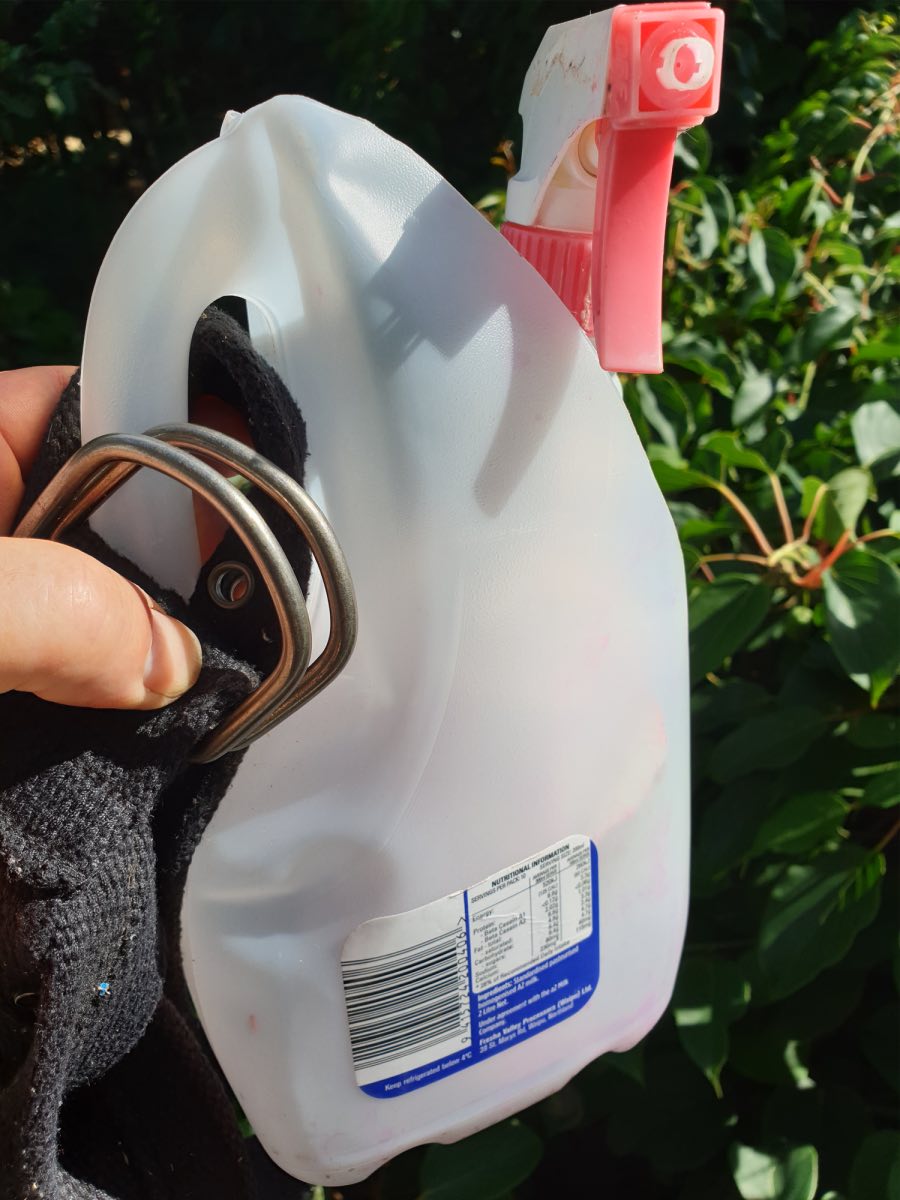Spray releasing young trees with glyphosate
Friday, December 23, 2022, Dean Satchell's blog
I'm often been questioned about spray releasing diverse species when helping landowners with the early stages of forest establishment. Spray releasing methods for radiata pine are well established and you can spray right over the top of them with the right herbicide. But what about "alternative" exotics and native species? The issue is that the efficacy of each herbicide tends to be species dependent, so it's risky to use herbicide around young trees unless there is good knowledge on its safety. The stakes are high and failure can be catastrophic.
Because there are so many tree species and so many herbicides, spray releasing can get complicated. It is also perhaps the most critically important part to get right with growing trees. Because I like to keep things simple but effective, I use glyphosate. Of course glyphosate kills just about any plant it comes into contact with, but there is a simple method for its safe application to release young trees from their weed competition. The advantage with a broad spectrum herbicide such as glyphosate is that its simple to get right and kill all the weeds surrounding your trees. Of course, if there is a herbicide that you know is safe to spray around your trees and kills all your problem weeds, then just go with that one and ignore my advice.
Firstly, the spray mix needs to be right. For every ten litres of spray mix I use 100ml glyphosate 360. The "360" bit is the concentration of glyphosate, meaning that there is 360g/litre of the active ingrediant (i.e. glyphosate). If the label says the concentration is different then adjust the mix accordingly.
Next, 20mls of penetrant should be added per ten litres of spray mix. This is important to kill legumes such as clover and gorse and other hard-to-kill weeds.
Lastly, spray dye is essential. I just use a splash for every ten litres, enough to see where you've applied the spray. This is not only because it's important to know where you've already sprayed, but also to alert you where you accidently get spray on your trees.
Then, the most important kit to prepare before you start is the "spray guard". This is to stop spray drifting onto your trees. This is essentail and I've demonstrated what I use in the video below.
Spraying a one metre circle around your trees seems to be standard practice. Best in late spring or early summer. Too late and your trees get lost or just don't grow because of root competition.
A simple but essential piece of equipment is a small spray bottle of water. Keep it on you at all times in case of accidental contact between glyphosate and tree. The glyphosate must be washed off immediately, because the penetrant quickly draws it into the plant.

Never spray if there is rain or too much wind. Keep the pressure low, don't pump the backpack up too much because you'll get more spray drift which is risky for both yourself and the plant. Apparently glyphosate isn't good for humans so I like to use leather gloves over disposable latex gloves and good trousers and gumboots to ensure spray doesn't get to the skin.
I take no responsibility for the advice I give here, it works for me but if you're careless then things won't go well. Because glyphosate is a systemic herbicide, it can translocate through the plant from one point of contact and kill it. You don't want to get it on your tree. That said, it only seems to soak into green leaves, so doesn't appear to cause issues from soil or stem contact at the base of the tree.
Disclaimer: Personal views expressed in this blog are those of the writers and do not necessarily represent those of the NZ Farm Forestry Association.

 Farm Forestry New Zealand
Farm Forestry New Zealand
4 posts.
Post from JP Garden on January 20, 2023 at 3:16PM
Great advice Dean.
I leave tree release these days to contractors but regularly spray around a large area of planted natives. I am aiming to kill any competition rather than suppress so use a stronger brew of glyphosate -100mls/10lts of 510gms glyphosate/lt (rather than 360gms)with 25mls/10lts of Li700 Adjuvant as a surfactant and drift retarder.
As you mention, keeping spray pressure down is absolutely critical or drift will create a deadly mist!
Regards,
Pat
Millers Flat
Post from Grant Hunter on January 23, 2023 at 9:37PM
Music to my ears thanks, I cant keep track of the spray/species options, This is what I tend to do anyway, but now with a bit more confidence and structure (and out of the closet). But I'm one up on you with the spray guard technology - a large but light poly spade - see Bunnings link below
https://www.bunnings.co.nz/cyclone-short-handle-multi-purpose-poly-shovel_p0254388
Post from Egon Guttke on January 24, 2023 at 5:43AM
if you just want to release pine seedlings, and are mainly dealing with competition from grasses, then Valzine is a simpler option, as you don't need to worry about the chemical coming into contact with the trees.
Post from Dean Satchell on April 26, 2023 at 9:22PM
Thanks Egon, but as stated above "Spray releasing methods for radiata pine are well established and you can spray right over the top of them with the right herbicide". This blog is more for those who have other species and don't know what is safe to use: "But what about 'alternative' exotics and native species?"
Add a post